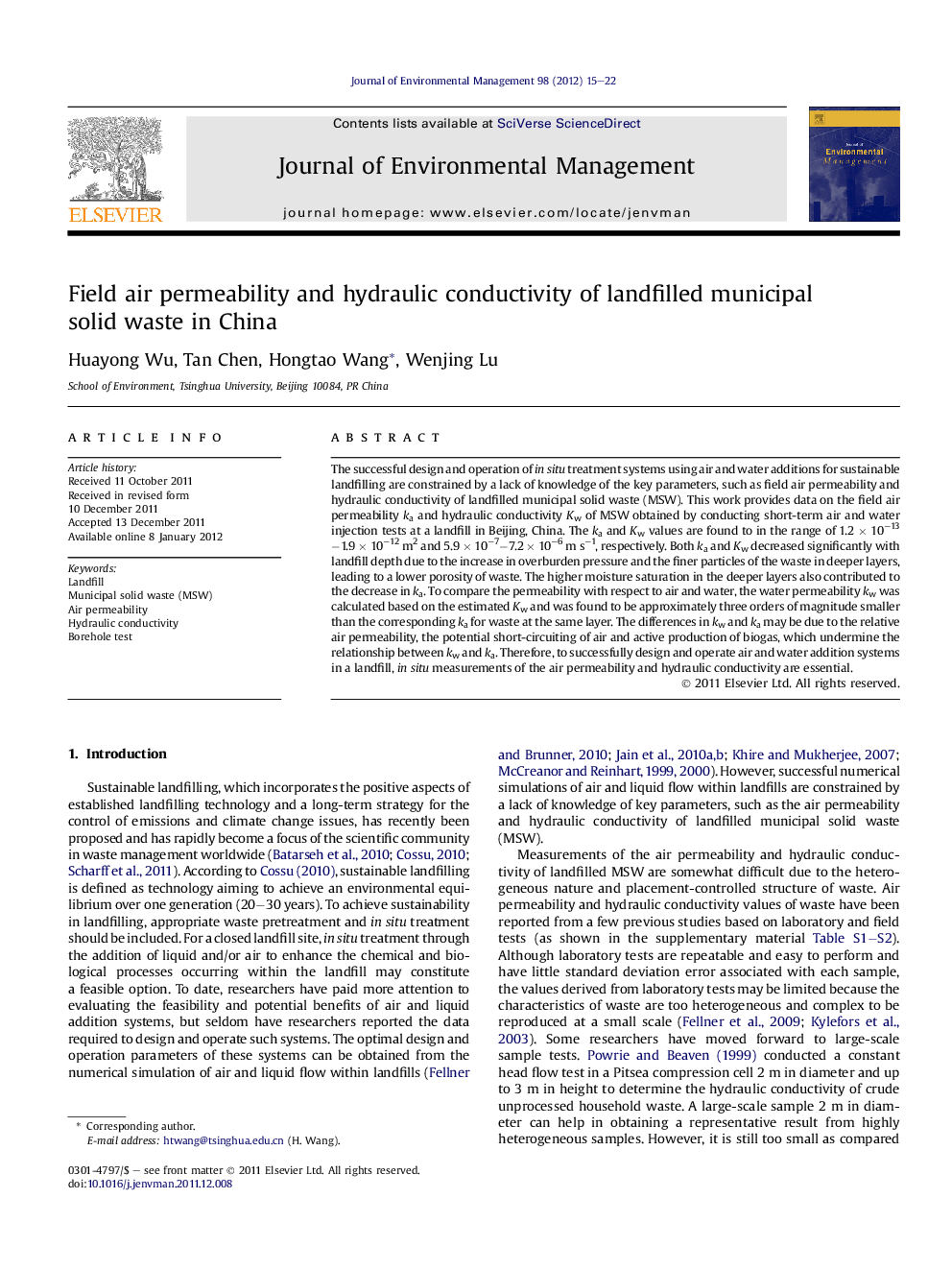| Article ID | Journal | Published Year | Pages | File Type |
|---|---|---|---|---|
| 1056934 | Journal of Environmental Management | 2012 | 8 Pages |
The successful design and operation of in situ treatment systems using air and water additions for sustainable landfilling are constrained by a lack of knowledge of the key parameters, such as field air permeability and hydraulic conductivity of landfilled municipal solid waste (MSW). This work provides data on the field air permeability ka and hydraulic conductivity Kw of MSW obtained by conducting short-term air and water injection tests at a landfill in Beijing, China. The ka and Kw values are found to in the range of 1.2 × 10−13−1.9 × 10−12 m2 and 5.9 × 10−7−7.2 × 10−6 m s−1, respectively. Both ka and Kw decreased significantly with landfill depth due to the increase in overburden pressure and the finer particles of the waste in deeper layers, leading to a lower porosity of waste. The higher moisture saturation in the deeper layers also contributed to the decrease in ka. To compare the permeability with respect to air and water, the water permeability kw was calculated based on the estimated Kw and was found to be approximately three orders of magnitude smaller than the corresponding ka for waste at the same layer. The differences in kw and ka may be due to the relative air permeability, the potential short-circuiting of air and active production of biogas, which undermine the relationship between kw and ka. Therefore, to successfully design and operate air and water addition systems in a landfill, in situ measurements of the air permeability and hydraulic conductivity are essential.
► We report field air permeability and hydraulic conductivity values of waste in China. ► Permeability values decreased with landfill depth due to the reduction in porosity. ► Air permeability is three orders of magnitude greater than water permeability.
